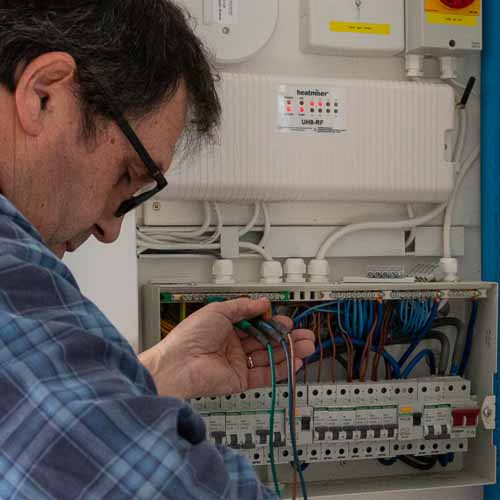In June 2020, the government introduced new regulations governing electrical safety in the private rented sector, in particular landlord electrical safety certification. The new standards require landlords to have the electrical installation in their properties inspected and tested by a qualified electrician at least every five years.

We’ve put some information together on what the regulations mean in practice, what an Electrical Installation Condition Report involves and what happens if a landlord fails to comply with the rules.
Electrical safety standards in the private rented sector: What is required?
As of April 2021, all new and existing tenancies in England are required to have an Electrical Installation Condition Report.
An EICR tests the condition of a property’s electrics according to the UK Standard for the Safety of Electrical Installations – the BS 7671 Requirements for Electrical Installations (IET Wiring Regulations).
The purpose of this updated landlord electrical safety certification, and the regulation as a whole, is to ensure that the national standards for electrical safety are met in every property, guaranteeing high-quality and safe housing for tenants.
The test involves:
- Assessing the condition of the wiring system
- Checking the adequacy of the earthing and bonding to prevent electric shocks
- Checking the fuses, circuit breakers, switches and other power conductors
- Ensuring the ongoing serviceability of switches, sockets and light fittings
- Checking for any wear and tear or damage
- Making sure the wiring is readily identifiable for future inspections, testing, repair and maintenance
Following the inspection, the electrician will issue you with a report detailing the results and the date of the next test.
Once you receive this report, you are required to:
- Supply the local authority with a copy of the report within seven days of receiving a request
- Give a copy of the report to the existing tenant within 28 days of the inspection
- Give a copy of the report to a new tenant before they occupy the property
- Give a copy of the report to a prospective tenant within 28 days of receiving a request
- Retain a copy of the report to give to the electrician who undertakes the next inspection
For more information about how much EICR’s are – read our EICR cost guide.
What will the report show?
The EICR will either state that the installation complies with national standards and is satisfactory for continued use, or it will declare it as unsatisfactory and include details of any suggested or necessary remedial work that needs to be done.
Electricians use the following classification code to indicate what level of repair work needs to be undertaken.
- C1: Danger exists requiring immediate remedial action and the persons using the installation are at risk.
- C2: An observed defect is not considered dangerous at the time of the inspection, but will become a real and immediate danger if a fault was to occur in the installation.
- C3: An observed defect is not considered a potential danger, but improvement would significantly enhance the safety of the installation.
- F1: Further investigation is required.
If the report comes back as unsatisfactory pending further investigative or remedial work, a landlord is obligated to:
- Complete the specified work within 28 days of receiving the report (or a shorter period, if stated)
- Obtain written confirmation of the remedial works from the electrician and supply this to the tenant and local authority within 28 days of completion
What happens if you fail to comply with the rules?
The local authority may serve a remedial notice on the landlord requiring action or arrange for remedial action to be taken themselves.
The local authority can recover the costs of taking the action from the landlord, but the landlord has the right to appeal against a demand for costs.
If the report indicates that urgent remedial action is required, and the landlord has not carried this out within the period specified in the report, the local authority may, with the consent of the tenant, arrange to carry out remedial work.
Landlords who don’t organise an EICR or fail to undertake the necessary remedial work risk a fine of up to £30,000.